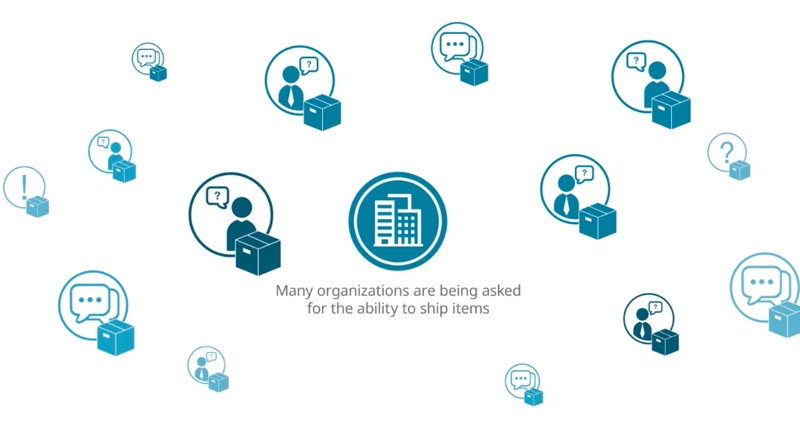At some point, everyone realizes that work gets in the way. Well, not really (I, for one, love my job). However, there are some things that have to be done during business hours — be it a trip to the DMV, meeting with your kid’s teacher, or standing in line at a parcel drop-off location to ship a personal package with a gift for a friend, important paperwork, or even an item sold on an online auction site — that can’t be done other times of the day.
While a trip to the motor vehicle registry or school may be unavoidable, there are ways that companies can help their employees take care of cutting down on errands to ship a parcel. However, there is a right way and a wrong way of doing it. Do it the wrong way, and it can cost you both in dollars and time. Do it the right way and you can not only cut costs, but help recruit and retain staff while keeping them more engaged and productive at the same time.
Many large organizations formally or informally supported personal shipping either by employees going rogue and shipping on corporate accounts or trying to cobble together a do-it-yourself (DIY) shipping program for employees that unexpectedly ties up administrative cost-accounting resources. However, with the correct technology and strategy, companies can offer personal shipping as an employee benefit without adding any costs or administrative workload.
Here are four scenarios where many companies are supporting personal shipping, whether they know it or not.
1. Rogue shipping Scenario One
Employees leave the office during the day to ship a package on company time. Even if they use their lunch break to run the errand, they can still lose valuable time if they run into traffic or the dreaded lunchtime lines that plague retail, shipping, and fast(?) food establishments. This leads to lost productivity, unavailable employees, and potentially paying them to stand in line rather than be at the office with their co-workers.
2. Rogue shipping Scenario Two
While it is often thought of as little more than “borrowing” a pen or some paper from the office, some employees throw their packages in the mailroom stream to be labeled and shipped on the company’s dime. The costs of paying for your employees’ personal parcel shipments add up the same way as losses from supplies and inventory. Reconciling untracked rogue shipping expenses takes up valuable administrative time.
3. DIY Scenario One
Some companies allow employees to use corporate carrier accounts to process personal shipping and then look for reimbursement for that expense. But reimbursing companies for personal shipping expenses often leads to just as many losses as rogue shipping. With DIY personal shipping methods, companies may have to allocate countless accounting resources to process and account for transactions, including handling cash, credit card, or payroll deductions for reimbursements. Not to mention, there is little or no way to reconcile, let alone collect, post-shipment fees for bad addresses, dimensional weight charges, and more.
4. DIY Scenario Two
So, maybe you’ve decided to take the variables out of your DIY plan by using a custom-built tool to ship on your account. Well, this is a great idea if your company has the time, effort, and money for IT resources to build and maintain solutions that can handle all the personal shipping your employees will send through your account. This especially matters if you have concerns about handling credit card information and personal information securely or the headaches associated with processing payments for personal shipments. Perhaps the biggest drawback, especially after the resources allocated, could be the inability to collect post-shipment adjustments.
5. A better way
While those four scenarios are all ways personal shipping can be done, they all come with varying degrees of cost, work, and risk for the organization. However, there is a fifth scenario that takes all of the risks out of putting together a comprehensive personal shipping benefit for employees.
Pitney Bowes’ desktop shipping app, SendPro Enterprise, now provides companies with a high value, no-cost, and low-maintenance option that saves on losses from rogue shipping by allowing employees to ship from their desk using secure credit card payments for shipping and post-shipping charges.
There is plenty to share about SendPro Enterprise Personal Shipping, more than we have space for here.
To learn more about the benefits of offering Personal Shipping, join us for a 30-minute PARCEL webinar featuring Tom Hazel, Pitney Bowes’ Director of Carrier Management Solutions, and Mike Graves, Pierbridge’s Vice President of Product Management and Strategy, on Thursday, Sept. 26 at 2 pm EDT.
